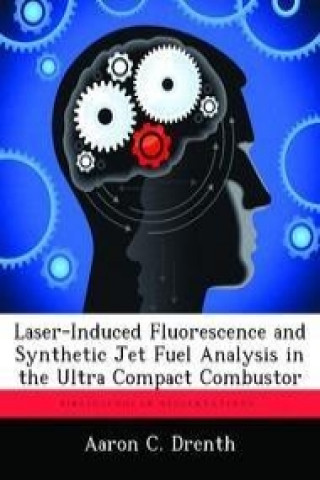
Code: 11946412
Laser-Induced Fluorescence and Synthetic Jet Fuel Analysis in the Ultra Compact Combustor
by Aaron C. Drenth
The Ultra Compact Combustor is currently under investigation at the Air Force Institute of Technology and Air Force Research Laboratory's Propulsion Directorate. This combustor is a small-scale, axi-symmetric, atmospheric pressure ... more
- Language:
 English
English - Binding: Paperback
- Number of pages: 166
Publisher: Biblioscholar, 2012
- More about this

You might also like
-

Dune
34.87 zł -33 % -

Haunting Adeline
125.92 zł -1 % -

Berserk Deluxe Volume 2
212.83 zł -1 % -

White Nights
15.42 zł -23 % -

Powerless
47.28 zł -14 % -

Atomic Habits
59.27 zł -26 % -

Dune Messiah
46.37 zł -3 % -

Berserk Deluxe Volume 3
150.02 zł -30 % -

One Day
32.66 zł -36 % -

Berserk Deluxe Volume 1
212.02 zł -2 % -

Iron Flame
63.01 zł -26 % -

Surrounded by Idiots
37.80 zł -26 % -

Harry Potter and the Prisoner of Azkaban (Minalima Edition)
170.59 zł -2 % -

Gravity Falls Journal 3
89.72 zł -

Heaven Official's Blessing: Tian Guan Ci Fu (Novel) Vol. 1
89.12 zł -1 % -

The Creative Act
100.31 zł -15 % -

Dune
38.10 zł -38 % -

Hunting Adeline
86.80 zł -34 % -

A Little Life
47.28 zł -14 % -

Children of Dune
46.77 zł -2 % -

Heaven Official's Blessing: Tian Guan Ci Fu (Novel) Vol. 2
86.80 zł -3 %
Availability alert
Enter your e-mail address and once book will be available,
we will send you a message. It's that simple.
More about Laser-Induced Fluorescence and Synthetic Jet Fuel Analysis in the Ultra Compact Combustor
 Book synopsis
Book synopsis
The Ultra Compact Combustor is currently under investigation at the Air Force Institute of Technology and Air Force Research Laboratory's Propulsion Directorate. This combustor is a small-scale, axi-symmetric, atmospheric pressure, laboratory combustor with an outer circumferential cavity in which the flame is stabilized by a highly accelerated swirled flow. This ultra-compact combustor (UCC) will enable aero gas turbine reheat cycle engines and significantly shorten conventional aero gas turbine engines. The experiments of this work utilized the AFIT small-scale combustion diagnostics facility, investigating a sector model of the UCC. The objectives of this research was to perform an addition to and validation of the COAL lab laser diagnostic system and to begin the characterization of a small-scale model of an UCC using hydrogen, and both traditional and synthetic jet fuels. Validation of the laser system was accomplished by using two-line planar laser induced fluorescence (PLIF) on a laminar premixed hydrogen-air flame produced by a Hencken burner. OH species concentrations were measured. Flame temperatures were determined with a two-line fluorescence technique using different transitions in the (1,0) band of the OH (A-X) electronic transition system. Comparisons are made to existing research to prove accuracy. Operational procedure of the Hencken burner and UCC were modified as necessary. The ignition system was modified and UCC starting conditions have been updated. Emissions data was collected using synthetic jet fuel and compared to traditional jet fuel. Future work will involve using PLIF to further study the cavity-vane interactions of the UCC.
 Book details
Book details
- Full title: Laser-Induced Fluorescence and Synthetic Jet Fuel Analysis in the Ultra Compact Combustor
- Author: Aaron C. Drenth
- Language:
 English
English - Binding: Paperback
- Number of pages: 166
- EAN: 9781249592501
- ISBN: 124959250X
- ID: 11946412
- Publisher: Biblioscholar
- Weight: 308 g
- Dimensions: 246 × 189 × 10 mm
- Date of publishing: 09. October 2012
safisfied customers
Since 2008, we have served long line of book lovers, but each of them was always on the first place.
Copyright! ©2008-24 libristo.pl All rights reservedPrivacyPoučení o cookies



 21 million books
21 million books Delivery 12.99 zł
Delivery 12.99 zł (32) 444 93 66 (8-15.30h)
(32) 444 93 66 (8-15.30h)